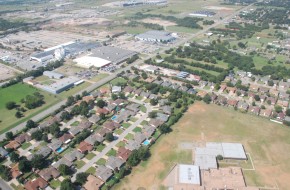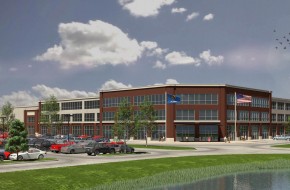Employment Land Needs Assessment & Action Plan
The Employment Land Needs Assessment & Action Plan (ELNAAP) was completed prior to planokc in response to Oklahoma City’s insufficient supply of large, served industrial and office sites. The goal of the study, which was produced by the City and several partner organizations including the Greater Oklahoma City Chamber of Commerce and the Alliance for Economic Development, was to provide ample opportunity for local companies to expand and for new companies to locate in Oklahoma City. The study compared the demand for and supply of large, served, well-located sites and made recommendations to ensure a consistent supply.
Findings
Oklahoma City has a substantial amount of land within its boundaries; however, relatively little land that is appropriate for industrial or office use is also serviced and consolidated into large sites of 50 to 500 acres. The scarcity of these large sites, which are needed to support new and expanding businesses, has hindered the City’s ability to attract new companies. Obstacles affecting the supply of development-ready land include:
- Parcelization: Land may be vacant but in small parcels with multiple owners.
- Lack of infrastructure: Most sites evaluated need some service extensions or upgrades, and the estimated costs are substantial.
- Market conditions: Property owners and developers are often reluctant to hold and develop land for industrial uses. Land suitable and even zoned for industrial development has frequently been permitted to develop for other commercial or residential uses. This often exacerbates the loss by creating conflicts from incompatible uses.
The historical and expected absorption of industrial/business park land in the region averages 80 acres per year. In any given year, however, the absorption has been and could be several times the average. To provide reasonable choice to the market, there should be an inventory of development-ready sites several times larger than the average annual absorption. These sites should be of various sizes (25, 50, 100, 500 acres) and in different areas within the city. A perpetual inventory of 1,000 acres of development-ready land would provide for most opportunities.
Recommendations
The ELNAAP made numerous recommendations, the most important of which are summarized below:
- Provide infrastructure in a timely and efficient manner to accomplish large-site inventory objectives. The City and its partners should coordinate infrastructure development to different areas of the City and emphasize the need for large employment sites. The City should guide development (especially employment land development) through the strategic installation of infrastructure, rather than allowing developers that do not coordinate either with each other or the City to determine where infrastructure is installed.
- Develop a capital improvement plan (CIP) consistent with and driven by planokc. Using planokc as the starting point for development of the CIP will ensure the CIP contributes to the development pattern desired by the community, including easily accessible job centers that provide ample supply of employment land long into the future.
- Create development-ready sites in high priority areas. High priority areas are listed in the ELNAAP, but are generally described as those areas that have the fewest property owners, the lowest infrastructure costs, and industrial zoning.
- Expand partnerships by teaming with the State School Land Trust and the Airport Trust. Both of these entities own key employment land sites; however the School Land Trust has disposition policies that make it difficult to secure and develop their land in a timely manner. The City should seek to overcome these obstacles through a partnership with the School Land Trust.
- Conduct a market analysis for a business park. Other cities have examples of business and industrial park development where the private sector brings on space over a 20-year period. Additional analysis would be needed to determine whether that model would work in Oklahoma City.
- Pursue public purchase or optioning of key properties. If property owners and developers are unable to assemble and protect large employment sites, the City or its partners should assemble and protect the sites. (Urban renewal districts provide a vehicle for this type of site assembly.) At the urban fringe, the City or its partners could acquire rural land in advance of the zoning and infrastructure investments that make the land more valuable.
- Designate and rezone additional land for employment uses. The previous comprehensive plan was amended to include the Employment (EM) designation based on the results of the ELNAAP. planokc also includes the EM designation as shown in the map to the right. Policies for appropriate uses and development in EM areas are included in Chapter 2.
Many of the recommendations above will be jointly pursued by the City and partner agencies such as the Alliance for Economic Development and the Greater Oklahoma City Chamber of Commerce. The Planning Commission and City Council can make an important contribution to our economic future by adhering to the intent of the ELNAAP as expressed in planokc’s land use plan. Consistent preservation of Employment Reserve areas and funding for infrastructure to serve them will facilitate economic growth for decades to come.
























